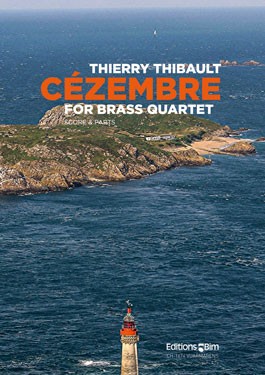Thibault, Thierry Cezembre
Brass Quartets

-
Thibault, Thierry
Cezembre [111.01]
21st Century (2007). Trumpet is flugelhorn.The island of the Corsairs, the forbidden island ...
C‚zembre has a past filled with stories that earned him all the names and all the rumors. Inhabited since prehistoric times, this great piece of moors and cliffs located four kilometers from the ramparts of Saint Malo has a unique panoramic view of the Bay of Cancale to Cap Frehel. Vauban (1633-1707), a military engineer of King Louis XIV, had understood and was eager to put the island at the heart of defense against the English. Many attacks have taken place, but it's at the end of the Second World War that C‚zembre has suffered most. Occupied by the Germans, the island is a strategic place to prevent the landing. The Americans put it in the crosshairs and increasing attacks until end of August 1944. WithIn a few days, more than 20,000 bombs and napalm attacks ravaged this advanced Malo. Thousands of bombs are still buried under the weeds and can explode at the slightest unstable movement. Until today, there is no postcard to be found of this strange place. As if we touched the intimacy of Saint-Malo... Score & parts. -the publisher -
- Category: Brass Quartets
- Item: 107901
- Grade/Level:
- Price: $26.95
-
(usually ships in 10 to 15 days)
